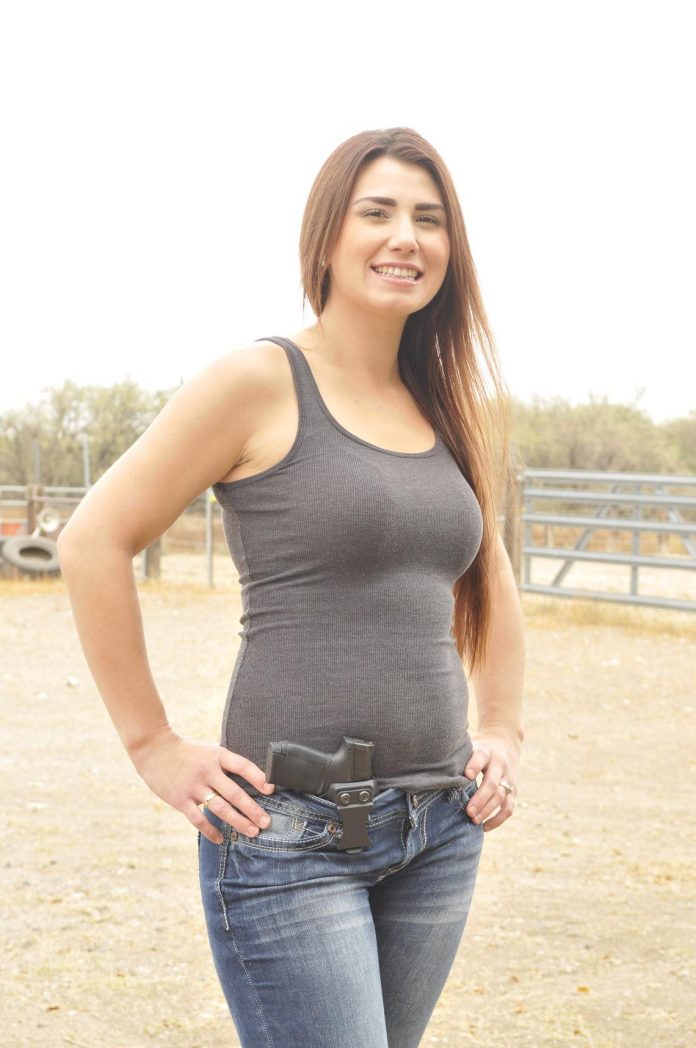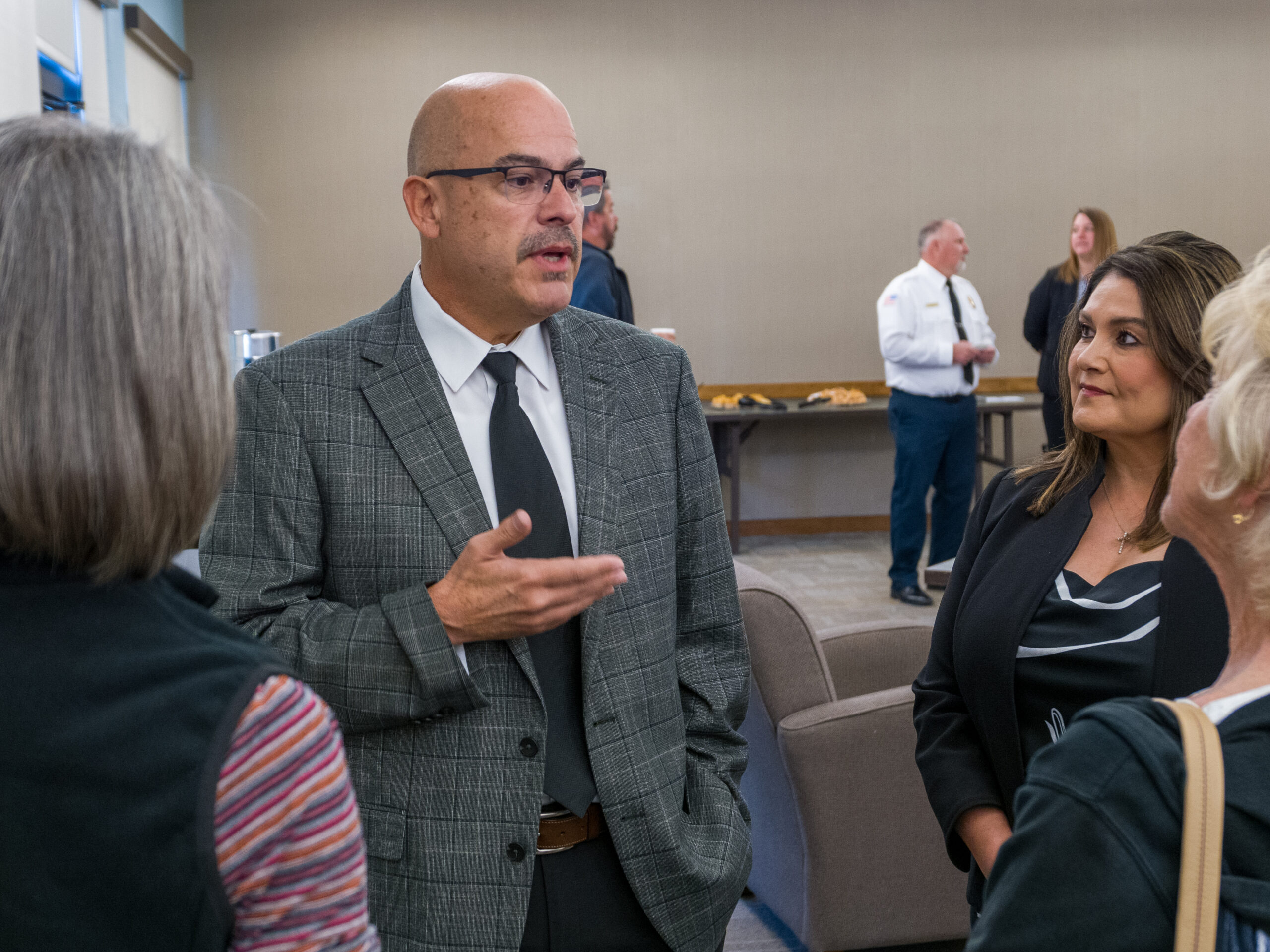You don’t need a flannel shirt, a rusty pickup and a grizzly beard to be one of the many people in the Verde Valley who carries a concealed gun.
Marina Zorilla, who works at a salon in Old Town Cottonwood, carries her Smith & Wesson M&P Shield 9mm handgun.
“I carry every day. I don’t leave the house without it. It’s just become a habit now,” she said.
Zorilla has been carrying for some years now, and chose the model of pistol for its light weight and the ease of concealing it within her purse.
“The recoil isn’t as much as I’ve had in the past,” she added.
Zorilla said that during her time carrying, about seven years now, she has not had to use her gun to defend herself.
She does try to make it to target practice at least every other week, however. Her family stocked up on ammunition and said 9mm ammo hasn’t gone up too terribly much. The stockpile has also been beneficial since her husband shoots the same caliber gun.
Permitted
Zorilla said she doesn’t have a concealed carry weapons permit. She said she’s considered it, but since she has been carrying for so long, other classes that she’s taken along the way have made up for it, including with a former U.S. Army Ranger. Furthermore, she said she doesn’t leave the state often, so she doesn’t need the reciprocity the permit carries.
“It’s an open carry state,” she said.
Dave Billingsley, a National Rifle Association-certified pistol instructor who runs SAFE Firearms Training, teaches CCW permit classes. He said there was one main reason people chose to take his course.
“The way this country is headed, they just want to be able to protect themselves when and if the time should ever arise,” he said. “It takes minutes for [police] to come to you …. Essentially, they realize they are responsible for their own defense.”
The 98-slide presentation can take four to seven hours and covers legal issues, fingerprinting, safety and more. At the end, a test is given and graded and from there, students hit the range. State requirements do not necessitate passing a shooting test, but for Billingsley, seven of 10 shots need to hit a basketball-sized target from 21 feet away to pass.
The classes Zorrilla has taken have been beneficial, she said, from learning about the gun, how to handle it safely and cleaning and disassembling it properly.
“Just getting comfortable with shooting your firearm,” she said.
Billingsley said that comfort is a large factor in safety and for purchasing. He begins with a single round after safety training before fully-loading a gun and he recommends trying one of his rentals before making a purchase.
“People see a particular firearm and they think it feels wonderful in their hand and it seems like it might shoot very well …. Then they invest $500 to $700 in this firearm and they go to shoot it and they dread it,” he said.
The biggest problem he sees in students is the lack of information, which causes them to buy into common myths about gun ownership.
“Shooting a pistol is simple, it is not easy. It’s a recipe that’s similar to a golf or tennis swing,” he said. Without someone to help with the fundamentals, it is hard to shoot properly, he said.
Billingsley, who comes from a Game and Fish background, said he got into instructing because he wants to dispel myths and educate others on when — and more importantly, when not — to defend oneself.
Demographics
Zorrilla said that she doesn’t normally wear the 9mm on her hip due to her work, but on the occasion where she has, she said she hasn’t met anyone who reacted negatively. She said due to the state’s laws, it’s become a bit more common to see any denomination of person carrying.
“I don’t think there’s a stereotype about who carries, but I don’t think a lot of people think about women carrying,” she said.
She said she has a lot more of her female clients at her work that have shown more interest in getting handguns and permits and that it was “getting there” in terms of women carrying to the level of their male counterparts. She added fewer than half of her friends currently carry.
“If a woman has a firearm, it gives her the advantage to protect herself,” she said.
Billingsley said that his courses are full of a whole melting pot of people. From those taking the class before they turn 21 to be ready for when they can purchase to octogenarians, women, men and all minorities, he’s taught them all and said each class is highly varied.
“I have preachers and their wives from the church. It’s across the board. It really is,” he said.
Zorrilla comes from a gun family herself. She said they’re open about it and most have firearms of their own.
“Our family is pretty big on having guns for self-protection,” she said. “The women in our family, most of us carry.”
As far as navigating state gun laws, Zorrilla said that the pro-gun stance the legislature has taken has made it easy to follow and thinks they work well.
Billingsley said he would like to see a couple regulations pass without jeopardizing the rights of law-abiding citizens. Tighter restrictions on prohibited possessors and requiring a concealed weapons permit before purchasing a handgun were his two main points. Private individual sales were also a concern.
| Talking to Children About Guns |
| Proper gun safety in the home starts with making sure those too young to handle them know the proper rules. Marina Zorilla, mother of two, ages 3 and 5, said safety and respect for firearms comes first in her and her husband’s home.
“They know not to touch our firearms,” she said. “We keep our firearms in a safe and it’s a fingerprint safe.” Education is not just keeping her children away from guns, though. Zorrilla said she and her husband have supervised them while learning to shoot a single shot .22 rifle, a small caliber rifle commonly used as a starter rifle, “so they understand the power of a gun.” “They’ve been around it, so it’s not something they’re interested in or curious about I feel because we exposed them to it,” thus ending the taboo around firearms, she said. Provided proper safety has been instilled, Zorrilla said that 10 years old is a good age to buy a child his or her first gun. Concealed carry weapons permit instructor Dave Billingsley said he dedicates a solid portion of his course to child safety. He instructs students to tell children to find an adult if they should come across the gun stored improperly — in the open. Any adult will do, then the adult should go to the gun. This instruction should come as soon as children learn their primary language — usually around 2. As far as when to introduce children to guns or accelerate their learning, he said that it was up to the parent and the child’s individual development. “If I could prevent even one child from being harmed or killed, it was all worth it for me,” he said. According to the pro gun control group Everytown for Gun Safety, there have been 205 reported shootings by minors in the U.S. this year. These are accidental discharges, though acquisition through criminal means by minors and other situations outside guns in the home are included. The group cites improper storage as a major reason children obtain firearms. |



